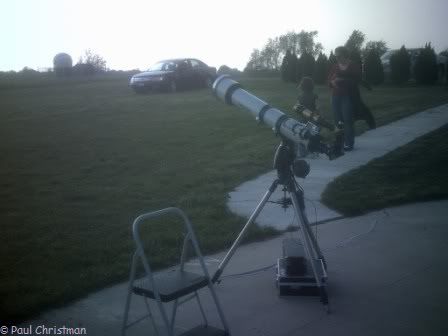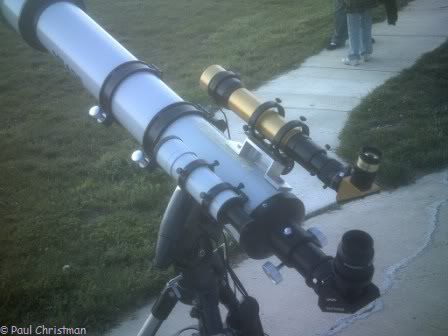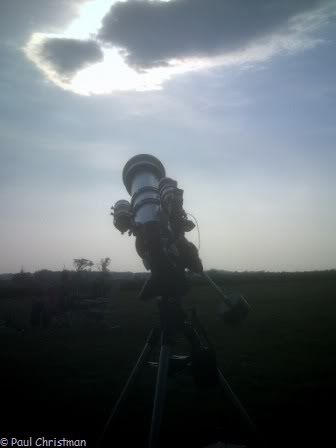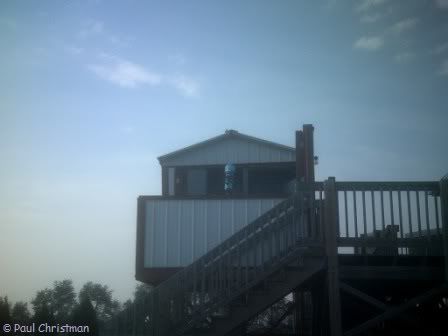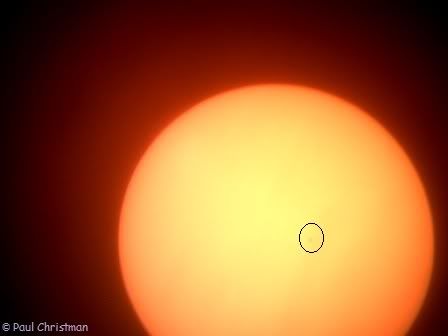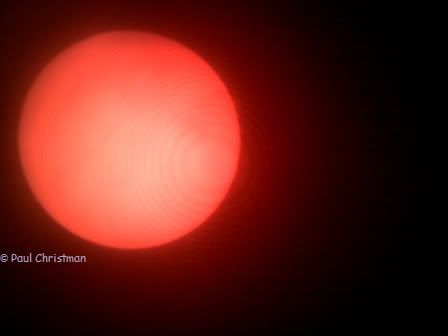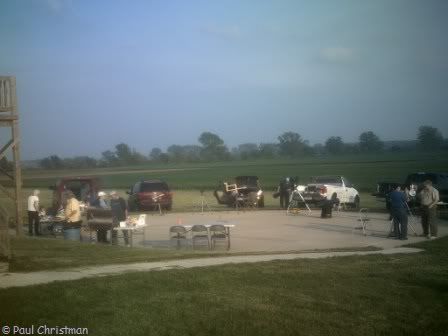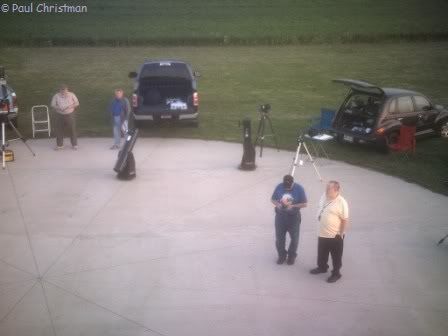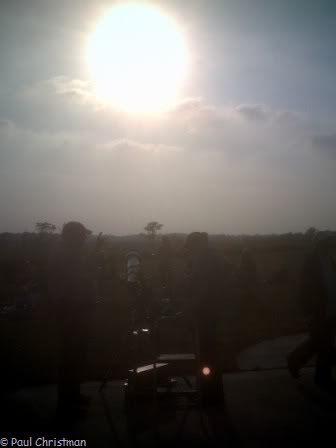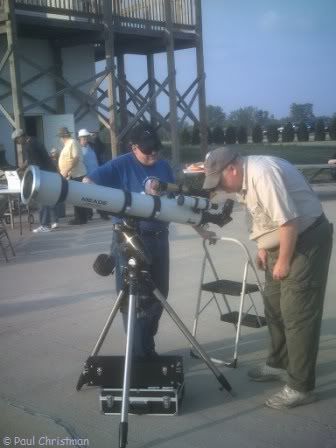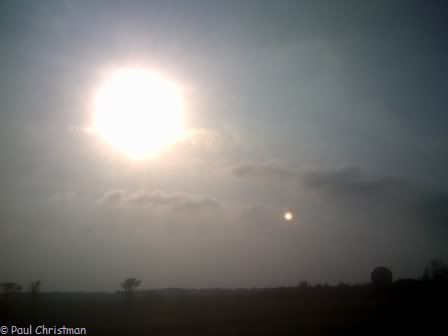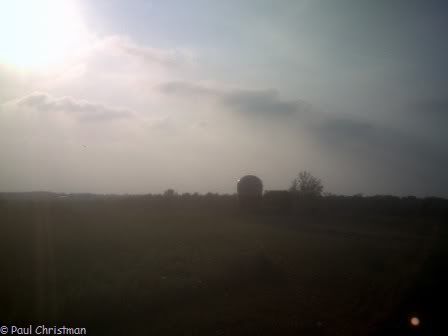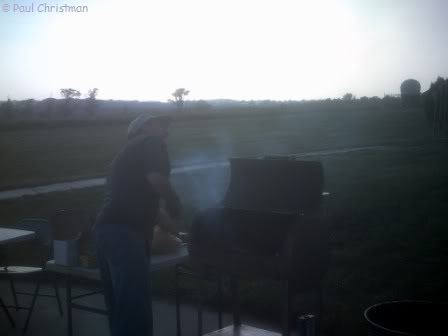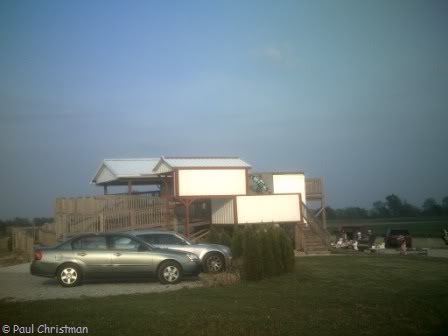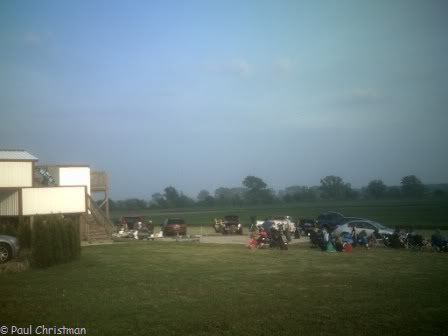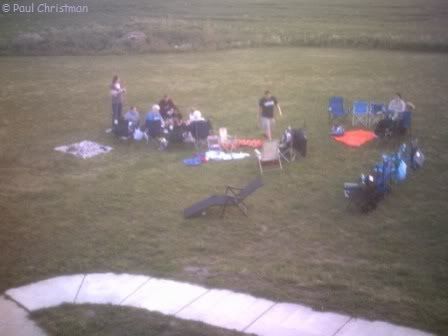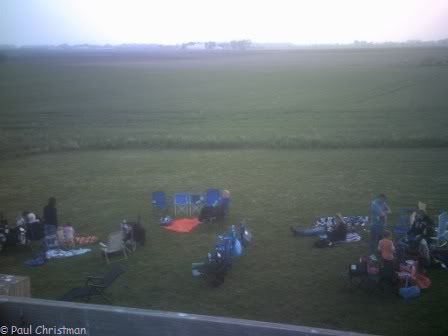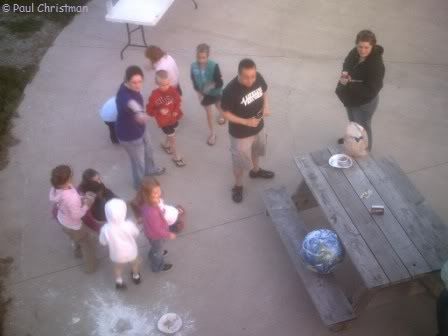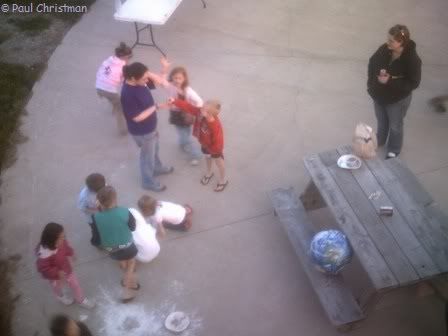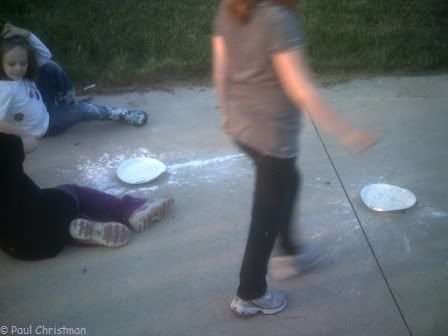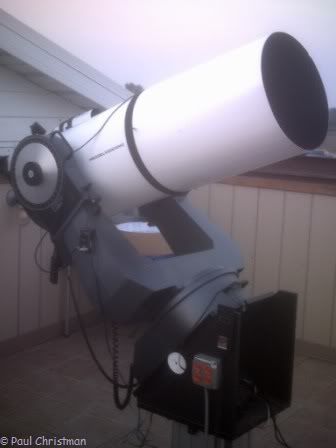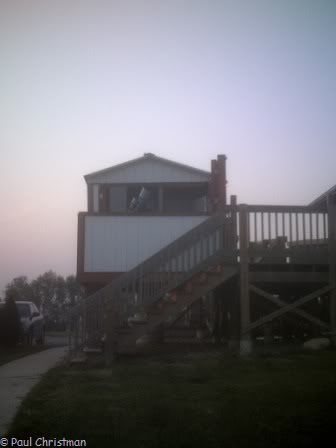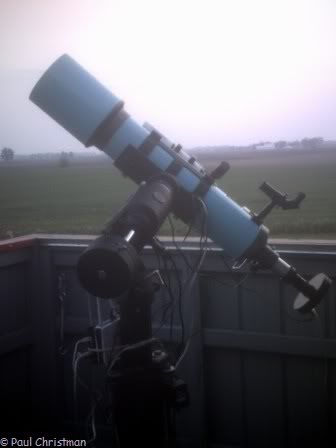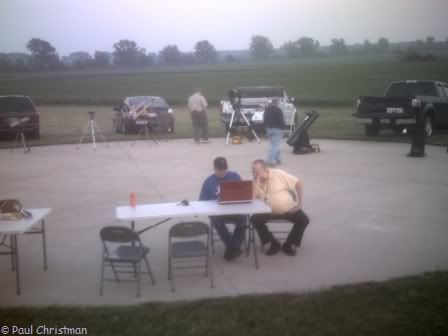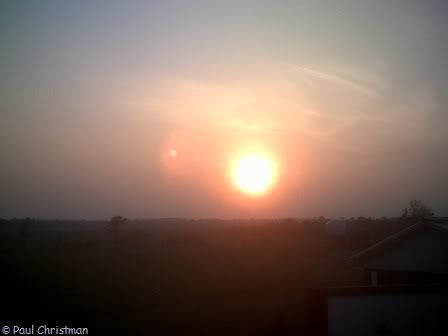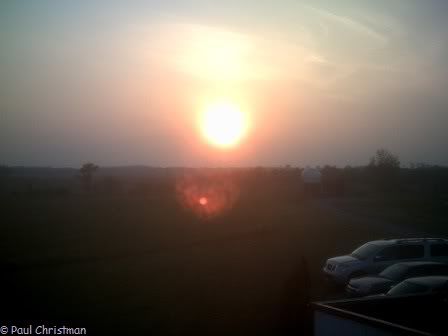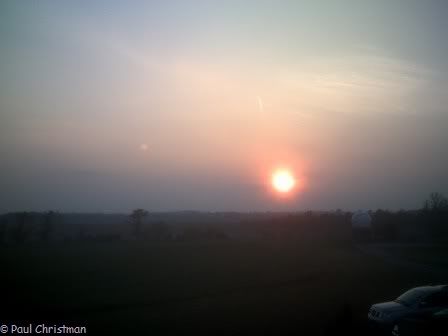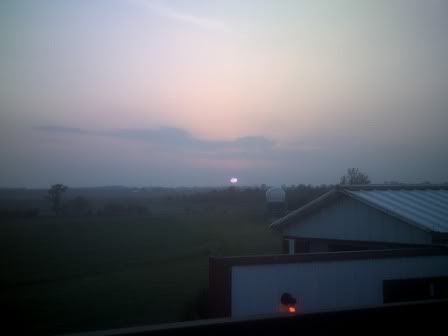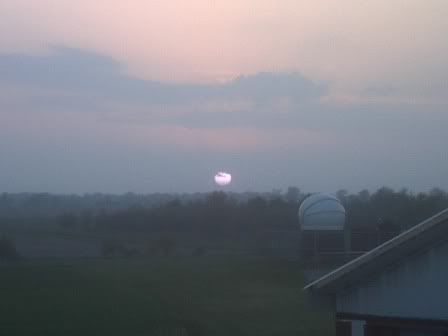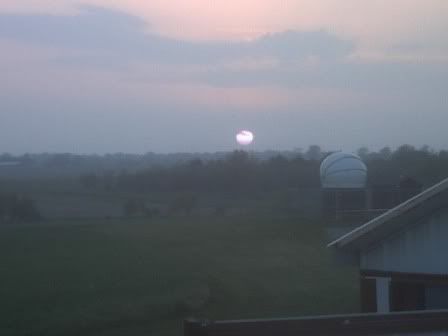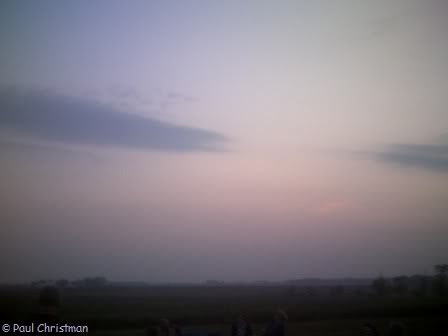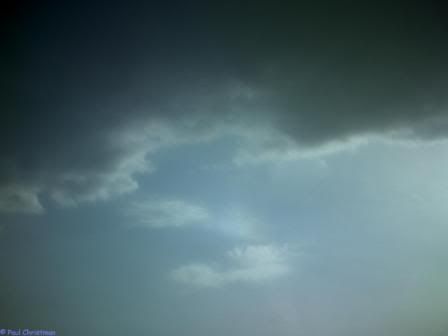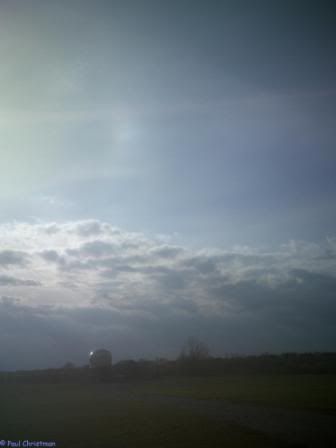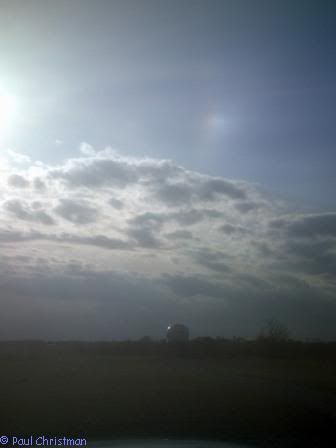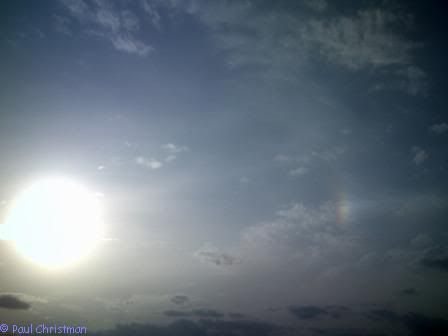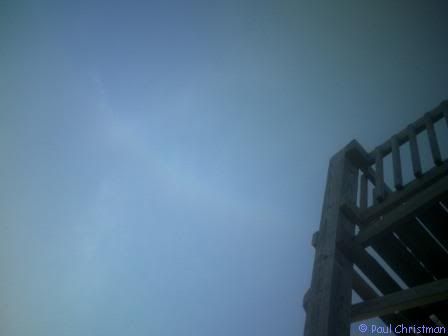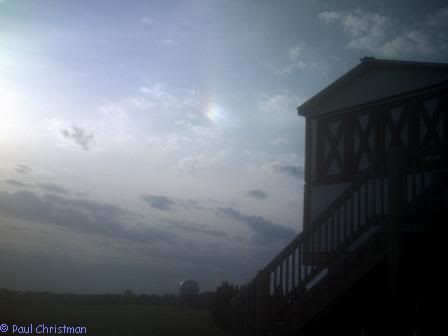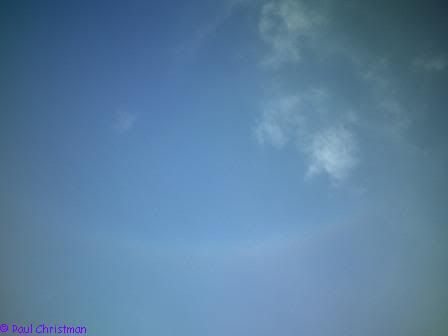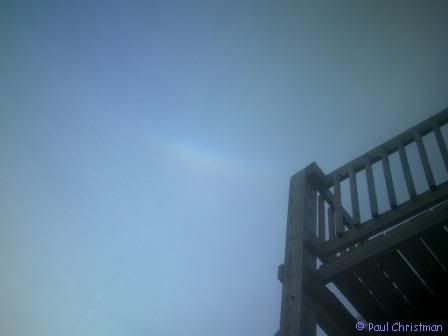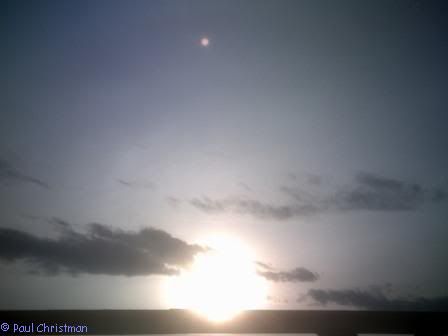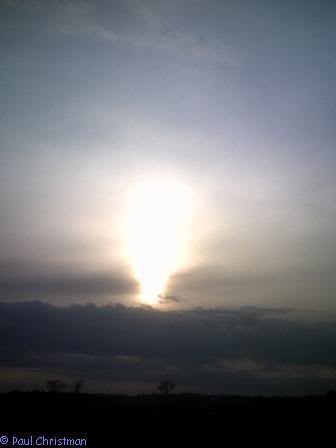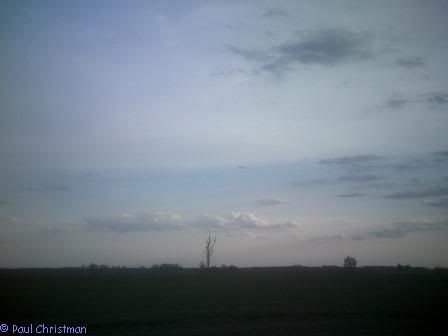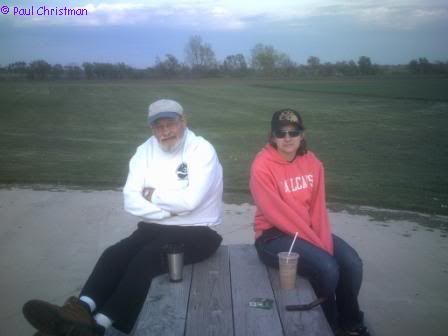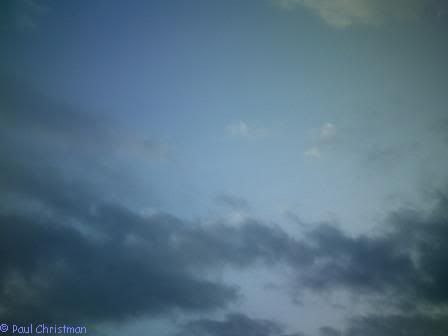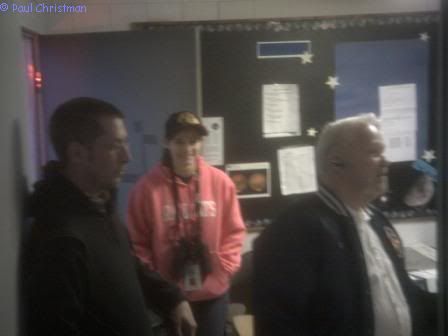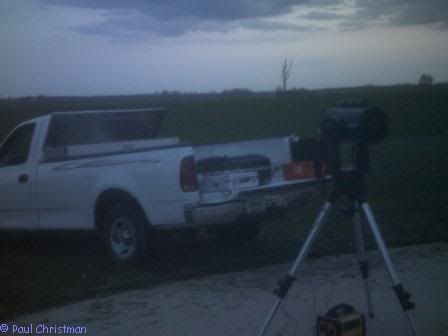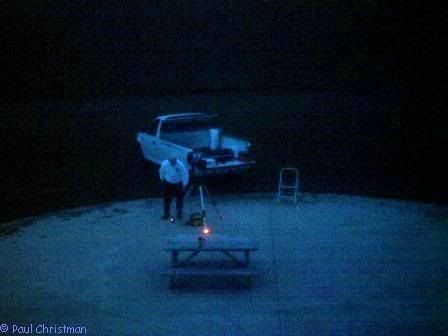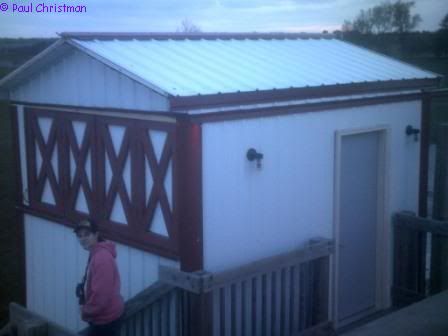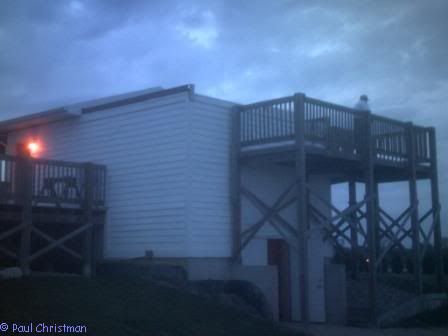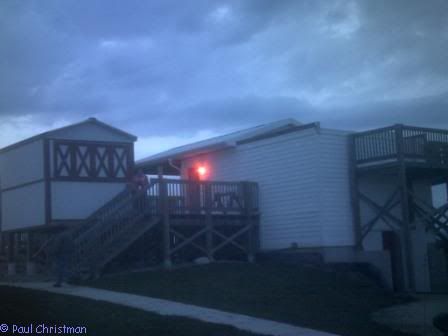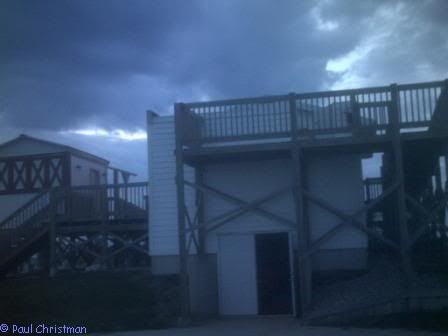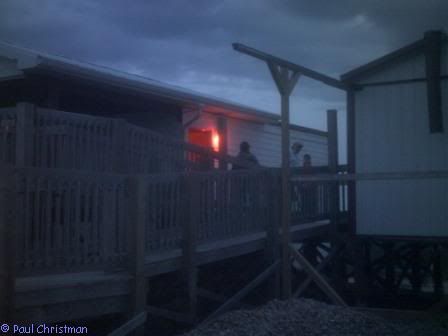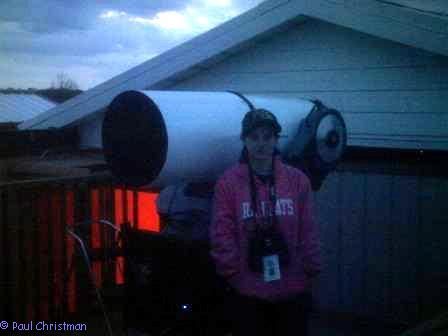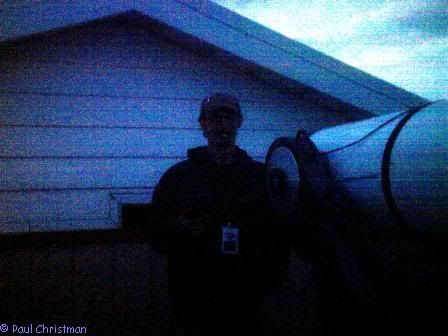On May 21, Calumet Astronomical Society hosted a group of Girl Scouts and their families at Conway Observatory in Lowell. I got to the observatory about 5:45, 15 minutes before the cookout was supposed to start. CAS members Maureen and Kim were our liaisons for the Girl Scouts. They are both deeply involved with them, and Maureen is a Girl Scout representative to NASA.
The forecast called for scattered storms throughout the afternoon and evening, but from 4 PM on, the general trend was a clearing sky. There was concern that we might not be able to observe after dark, but we were glad to have dodged the afternoon storms, and nothing looked to be approaching. When I arrived at Conway, Chris, Mike, Larry, Maureen, and Kim were getting ready for the visitors. Mike was setting up the grill for the cookout. The solar scope was set up, and the roof was open in the Hunter Astrophoto Lab. I’d seen the night before that the telescope and cameras were installed. The Girl Scouts (and families) hadn’t started arriving yet, so I opened my car, and staked out my piece of the concrete observing circle.
I put my scopes out, but left the dust caps on. Chris was working the solar telescope, and asked me if I wanted to view the Sun. Of course I did! I had borrowed the society’s Coronado personal solar telescope without realizing it rides piggyback on a 6” refractor with a white light filter. He pointed out that there was a prominence off the limb, and also I noticed a filament near the opposite limb.
When the visiting families started showing up, Chris asked if I wanted to operate the solar scope for the guests. I jumped at the chance. He showed me how to work the right ascension and declination controls, and I was off. I also used my solar set up, explaining how Galileo first observed sunspots.
CAS members with their telescopes and binoculars set up around the observing pad.
By 6:30 Mike had hamburgers and hot dogs off the grill. Waiting for the kids and visitors to eat, I sat and talked with Jim and Larry.
After getting a plate of food for myself, I wandered around the observatory and grounds, talking solar astronomy and explaining how the 16” telescope works with families who asked questions.
When the cookout was over, Maureen and Kim had activities planned for the girls, so I had time to get my telescopes ready. I walked over to the Hunter Astrophoto Lab to check out the new telescope. The telescope will be controlled by a netbook computer, or even remotely through a laptop with the proper software installed. The computer had not been installed yet, so I was a little surprised when the telescope started slewing while I was looking at it. I hadn’t touched anything, so I had a feeling Chris was messing with my head. I looked over to the observing pad and saw Chris with his laptop looking back at me. He was testing the system, and I heard later even tried imaging Saturn before dark.
With no Moon, everybody was getting anxious waiting for the first stars (and Saturn) to appear after sunset. Finally Arcturus and Saturn shined through the twilight, and there was a buzz around every telescope. There was too much twilight for deep sky objects, so Saturn and double stars such as Alcor/Mizar, and the Double Double in Lyra were the prime targets. The crowd was already thinning out before full darkness set, and even the Calumet astronomers were packing up by 10:30 PM. We did see a few meteors and a bright, high Iridium flare, the Beehive open star cluster, and globular star cluster M5. I tried the galaxies M65 & 66, and M104 to little fanfare.
It was a fun time, even though conditions were not the best. We knew we were lucky to see anything at all given the evening’s forecast. As the last CAS members were getting ready to leave, I knew I was going to stay out until the clouds came in, however late that might be, and I would have the observatory to myself. Just a few hours before I had never seen so many people and telescopes on the grounds, but now I was going to be able to explore the universe alone. Either way is fine with me.

